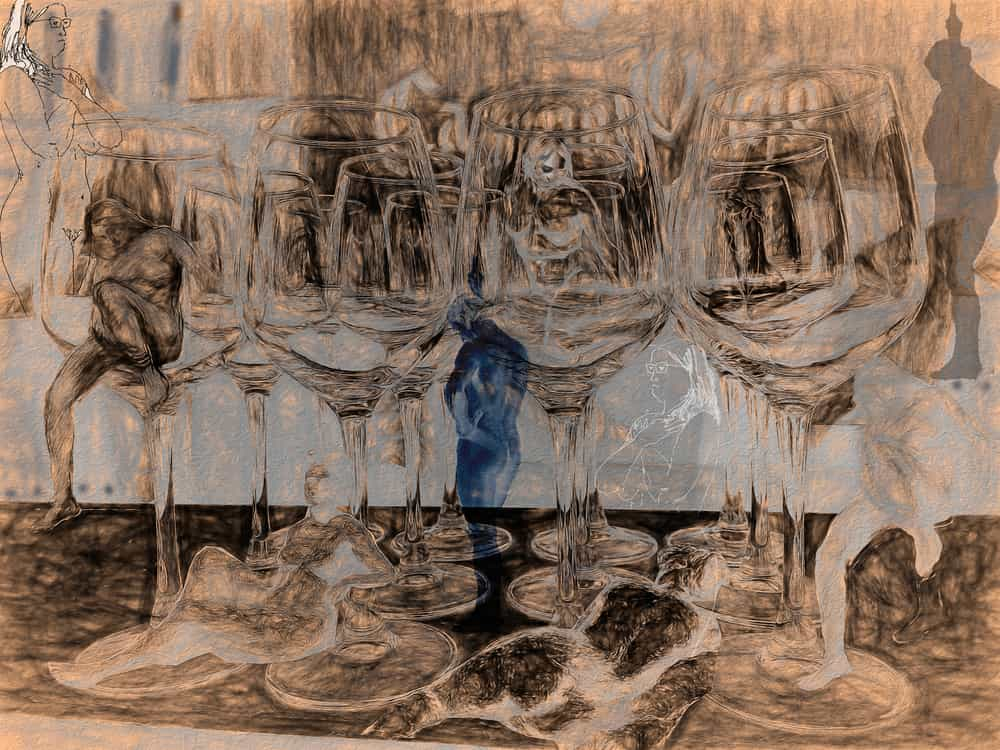#InConversation with Santosh Jain
By Sanjana Srinivasan | Jun 8 2023 · 5 mins
Santosh Jain came to art-making in the 70s as a young Printmaker from College Of Art, Delhi. Her prints earned her prestigious awards, a two year fellowship to the Gerrit Rietveld Academie, Netherlands, solo shows in Paris and Amsterdam and an inclusion in prominent artist associations in India. By using mediums as a language of expression, Jain’s practice over the years has included lithographs, collages, paintings and photographs. The past decade of her career has centered around Digital Landscapes (photography mixed media). Here, Sanjana Srinivasan speaks to Santosh about her work, particularly her Digital Landscapes, and her inspirations.
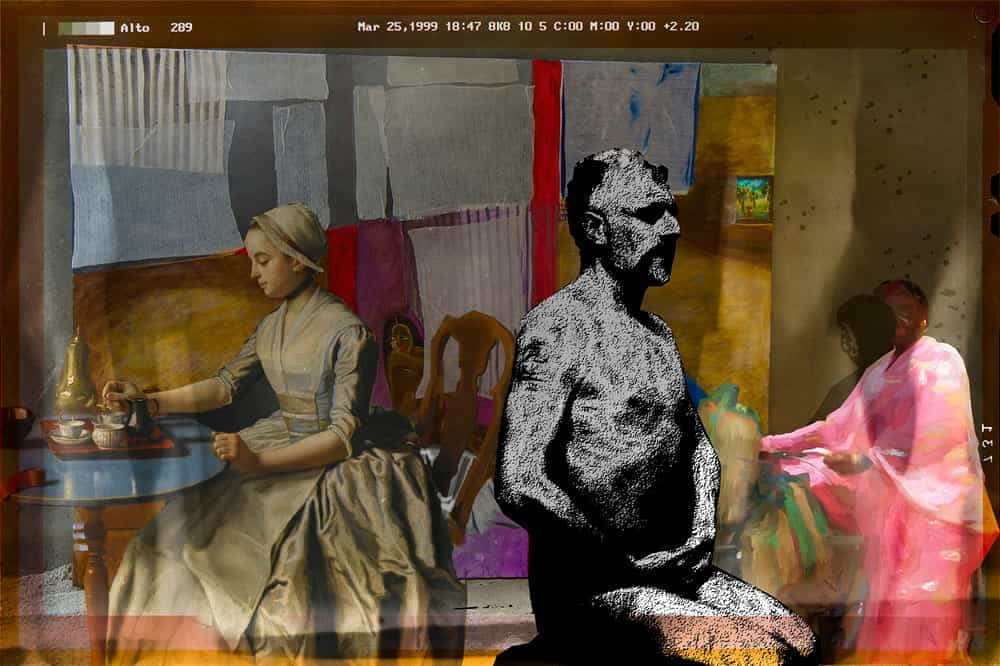

Meditation, 2019
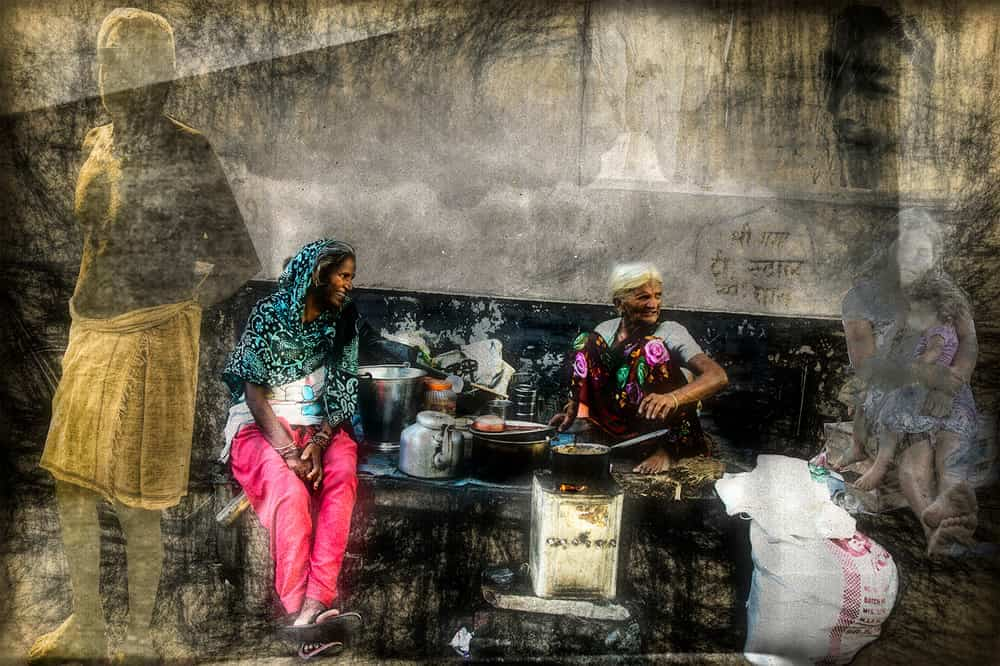

Elastic People I (part of series), 2021
Sanjana - Hi Santosh! Thank you for taking the time to share your thoughts on your artistic practice. I want to begin with the one aspect that stands out about your work – your experimentation with different mediums. Can you tell us about your affinity for exploring various mediums throughout your career?
Santosh - I’m ‘experimental’ by nature. I was a carefree child, bindaas… If I had to go to someone’s house or if I wasn’t sure of an address but vaguely remembered the location, I would take any route and wander towards the place. I wasn’t afraid to take alternative routes. I would think to myself – I won’t get lost; either I will reach the location or return to my home. It’s the same approach to my art. By using mediums as a language of expression, my practice over the years has included lithographs, collages, paintings, charcoals and photographs.
Sanjana - Speaking of mediums, one constant element in your work is the use of collage, whether physical or digital. Can you tell us how you began using this medium and what draws you to it?
Santosh - I’m a storyteller and I want to tell stories that have been mostly untold… To ‘narrate’ a story on my canvas, I begin by looking for the perfect characters to play their roles – through my photography, from archival works of Masters, my own drawings and varied expressions I find in my travels. The collection is emotional, subliminal and sometimes personal like a 'working library,’ with characters appearing and reappearing in a number of my works. The carefully assimilated ‘cast’ comes together to role play and express my inner concerns. I also spend a lot of time, over days and hours, on constantly reconstructing and building the layers, both digital and by hand, with pastels, charcoal and pen, as I deep dive into the work. The process is intuitive; the truth often revealed in the final work.
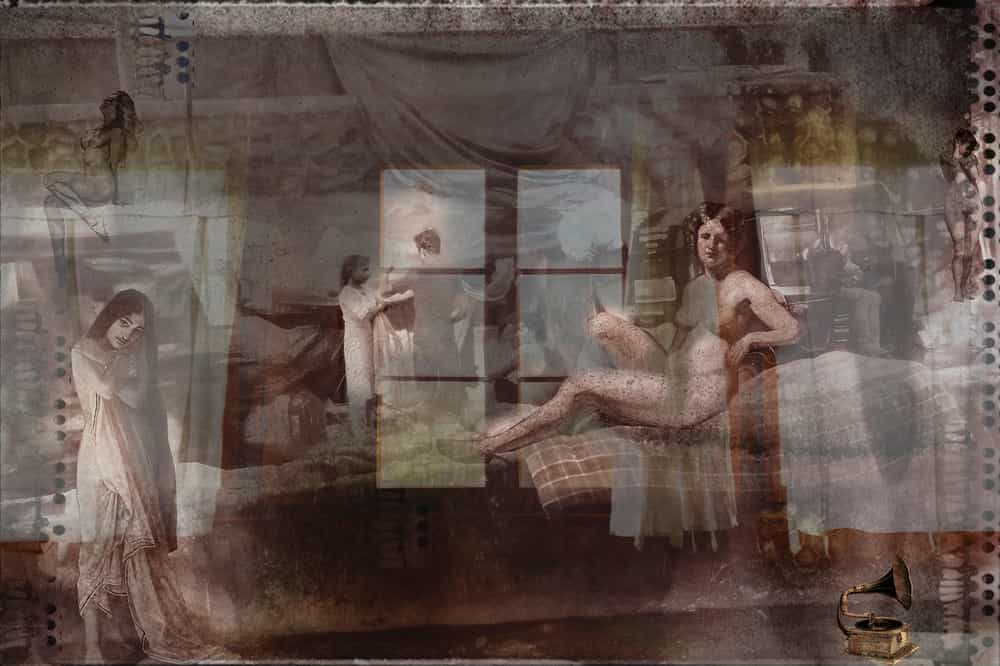

Shroud Of Night, 2023
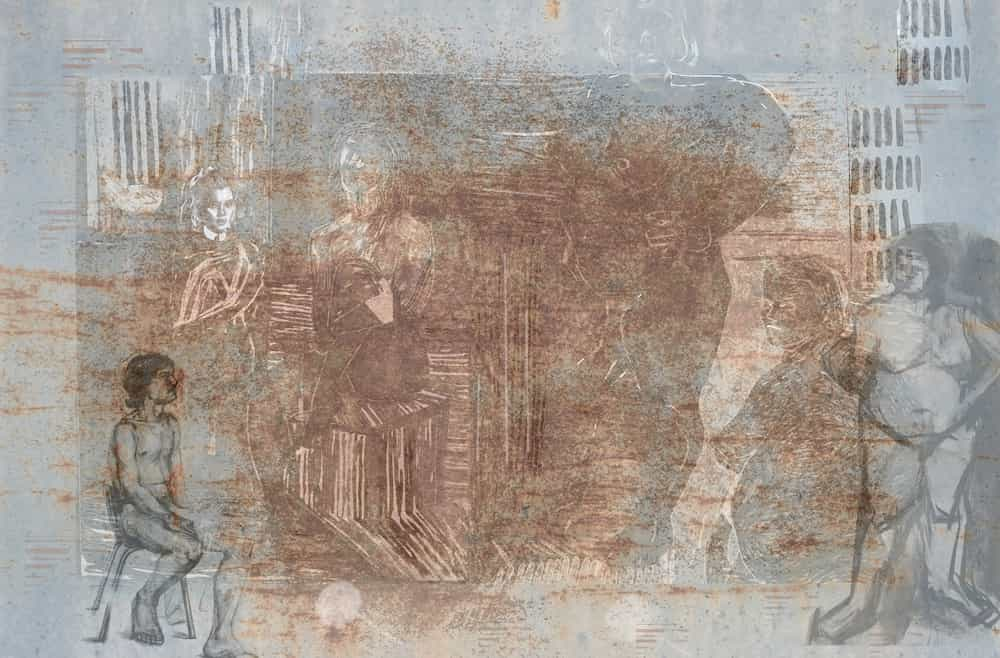

Untitled, 2021
Sanjana -Your recent focus has been on digital collage, which you have embraced despite learning the techniques and softwares only recently, at the age of 60. Can you share your journey and experience in picking up these new tools and techniques?
Santosh - When I started in 2014 to create ‘Digital Landscapes,’ a dexterous juxtaposition of my original photographs of the everyday with virtual art brushes and conventional inks, pastels, pen and charcoal, I was fascinated with the way I could experiment with tonal values, layers, details and textures. I continued to explore the medium in the form of charcoal drawings, paint strokes, etching and pastel effects, all via tonal values using virtual brushes on a digital canvas. I also add brush strokes, pastels and charcoal by hand on my final printed art and by doing so, I break the barriers of time, space and mediums. Each work is unique and carries with it my personal emotions and experiences. The entire process of creating for me is a very intimate one. I love telling stories through this exciting contemporary medium and consider these works as an ode to the beginning of my art journey.
Sanjana - That’s amazing! Coming to what you depict, your work has consistently addressed the woman/female subject, exploring their exploitation, daily lives, and the male gaze. Has your approach to this subject matter changed over the years? What are some of the takeaways from your exploration?
Santosh - The theme of womanhood in all its forms, seen and unseen has been a constant thread through the career of my artmaking. While the medium and expressions have changed, the presence and significance of women has not. As a woman, I both sympathise and empathise with the female form. I see women as emotional beings, silent sufferers, pillars of strength and also game players. From old fables to modern stories, one can see these and many other shades of women.
Over seven decades, I have bore witness to the lives of many different women, a number of which being myself. Historically speaking, women have rarely been the central character of any story. Rather, they have been pushed into the background, their roles, desires, and existence nothing more than of service to others. While women have made remarkable progress in various spheres of life, I often question how truly their lives differ now. Has the change really seeped into families and societies? Through my art, I’ve explored the many ways in which women are an integral part of society, family, and life itself.
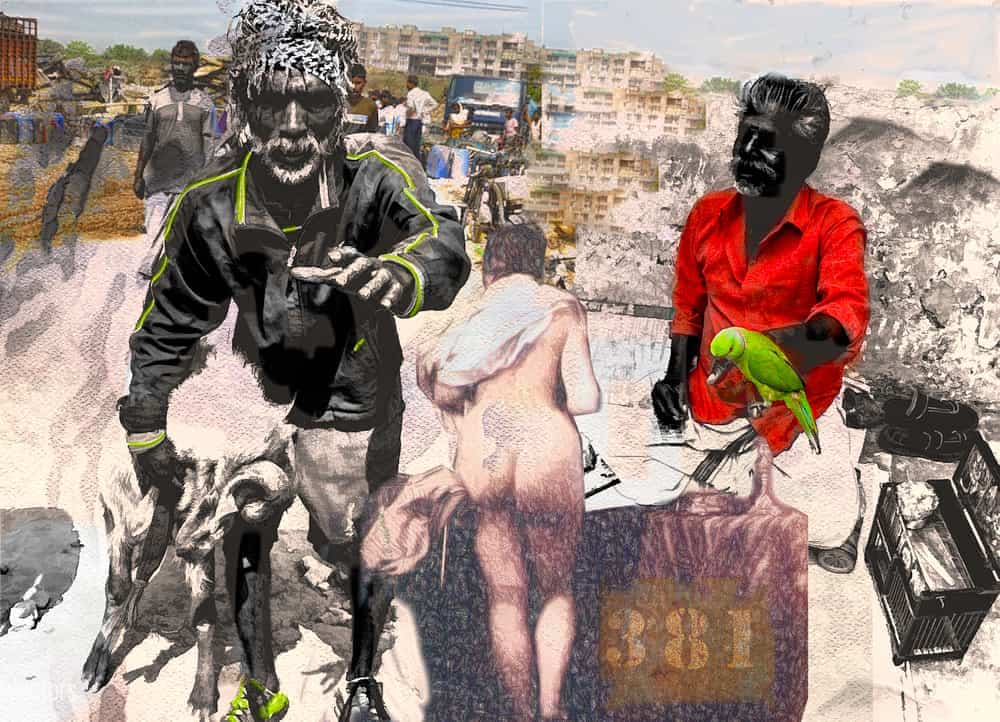

They Always Let Me Down, 2023
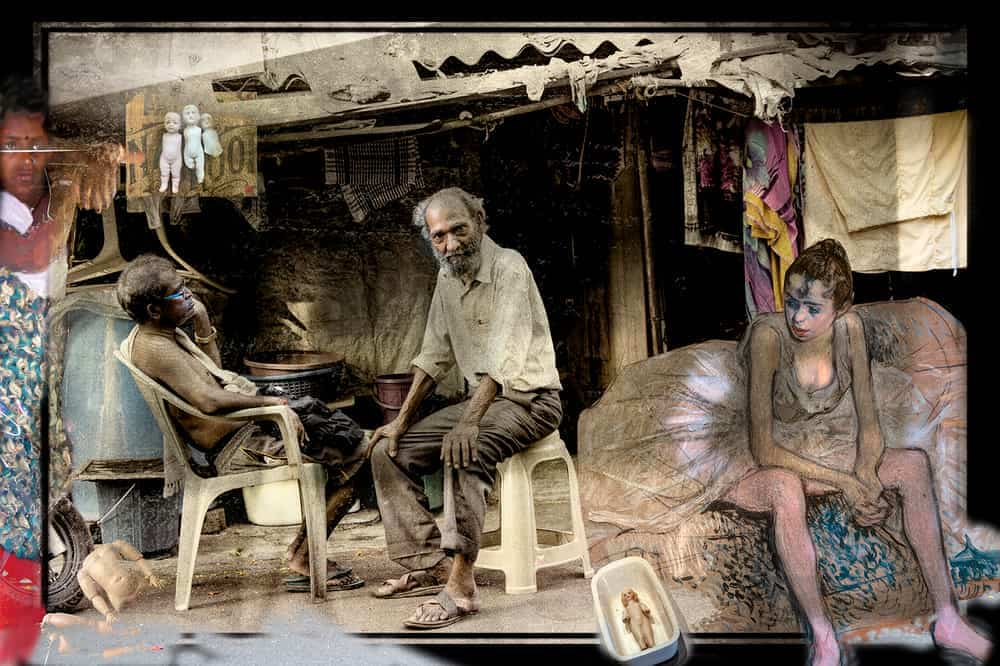

Dollhouse, 2022
Sanjana - So how do you come across the stories and subject matter that inspire your work? How do you approach them? And do you find it important to detach yourself from these stories when depicting them?
Santosh - I’m constantly absorbing stories around me. Subconsciously, I’m collecting stories everyday, everywhere. I myself have so many personal stories that have been untold. And I see the same human truths of love, joy, loss, pain, and longing from the remote towns in Kerala to busy streets in Paris. Sometimes I see my life story mirrored in another person’s story and sometimes I wonder what it would be like to be a character in a completely different story. My process of translating a story into my art is both intuitive and intimate. Every work carries emotions either because I could relate to the story, or because it reflects something personal. Each story I create is an intense experience.
Sanjana - On that note, could you speak a bit more about practising street photography? How does that work?
Santosh - Through street photography I’m able to observe real people and their true nature. People are not posing. I keenly observe their actions and emotions, small gestures and postures and am able to capture all that. The street allows me to collect ‘characters’ so that I can weave my stories.
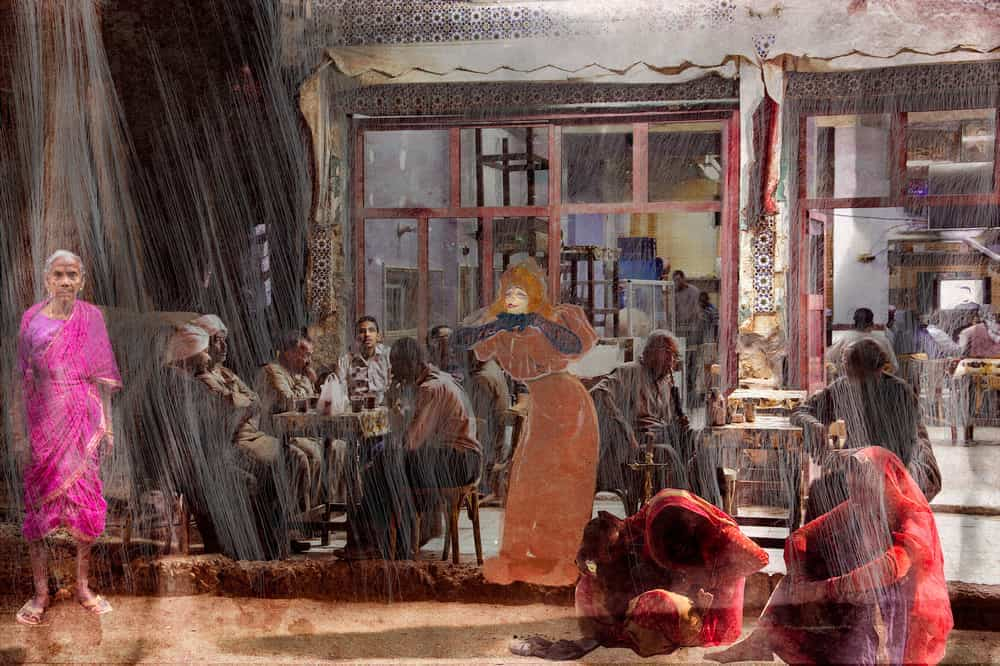

Adda I (part of series), 2021
Sanjana - I've noticed that you often incorporate figures from historical paintings into your works, removing them from their original context and placing them in intriguing ways. Is this a deliberate choice? How do you go about selecting the artworks you want to incorporate into your pieces?
Santosh - Old Master’s works are deep-rooted in my mind – ever since my art school days a few artists, especially the Impressionists have influenced me. To create a comparison between interpretations done in the past with the contemporary times, I sometimes lace my own photographs of the everyday with acknowledged works of Old Masters. This meticulous and seamless morphing creates visual landscapes that traverse a variety of time periods and I use them to provide metaphors that help me tell a contemporary story.
Sanjana - It's also really fascinating how your work aligns with feminist collage in many ways. Are you inspired by feminist art movements or feminist collage specifically?
Santosh - I am not specifically aware of feminists using collage as their preferred medium. My enjoyment lies in telling stories through my mixed media landscapes. However, I am thrilled to create endless possibilities and express myself with the same freedom and sensitivity that I have always cherished.
Sanjana - Where do you see yourself heading in the future?
Santosh - Maybe breaking another barrier or crossing another boundary!
Sanjana - Lastly, which artists inspire you?
Santosh - Amongst the Old Masters from the west, I love the Impressionists. Amongst the contemporary Indian artists I like the works of so many – Somnath Hore, Jagmohan Chopra, Tyeb Mehta, Manu Parekh, Anjolie Ela Menon to name a few.
Sanjana - Thank you Santosh! This has been really wonderful.
View Santosh Jain’s OVR, Pushing Boundaries, here.

